Text
Social Media: A Want or a Need? How the pandemic has revealed our dependence on social media.
The year is 2019. You have received an invitation to your friend’s birthday party via Facebook. Nothing new there. Something, however, is amiss.
The party’s location: Zoom.
In a pre-pandemic world, a virtual birthday party would have been both unusual and unexpected. But here in 2021, we have grown accustomed to lockdown life and have embraced the all-encompassing capabilities of social media. Social calendars are now jampacked with quiz nights via Zoom or Microsoft Teams, gin tastings on Houseparty and time spent binging Netflix series and recording long, rambling voicenotes using WhatsApp. Social media is now the only way to actually be social.
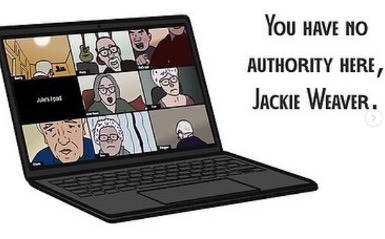
Credit: Instagram thatsluxgraphics
It is clear that the majority of the population are craving the physical contact and face-to-face communication we previously took for granted. However, for better or for worse, our methods of communication have changed irreversibly. According to Global Workplace Analytics, “seventy-seven percent of the workforce say they want to continue to work from home, at least weekly, when the pandemic is over.” Companies such as Facebook, Twitter and Square have agreed to continue such remote working opportunities after the pandemic, deeming gargantuan office buildings unnecessary and virtual meetings vital. The affordances of video messaging apps such as WhatsApp, Facebook Messenger, Skype and FaceTime enable users to simulate face-to-face conversations, allowing instant visual messaging in and out of the workplace.

Credit: Instagram Nafisa_Insan
Even with the affordances of social media, which provides instant, albeit virtual, access to friends and family, the isolation of lockdown has taken its toll. According to Mind charity, 73% of students reported that they were experiencing negative mental health due to the coronavirus pandemic. This has necessitated online and remote therapy sessions, using various video-calling platforms including Zoom, Skype and Teams. Ahmed Rashid observed in the British Journal of General Practice that patients missed the opportunity to build a trusting relationship with their therapist through face-to-face contact but appreciated the lack of waiting time and the flexibility of their sessions afforded by their online delivery. These remote appointments have improved patients’ ability to access mental health services which were previously considered to be “precarious”, according to Rashid.
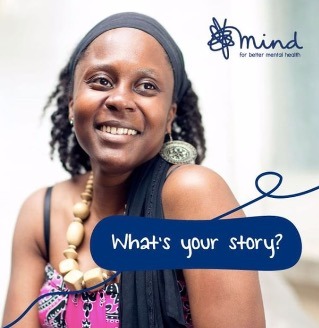
Credit: Instagram mindcharity
The world has changed over the past decade due to the exponential increase in social media usage. In 2013, a headline for The New Times read “Social Media – is it killing real life human ties and interactions?”, yet in 2021 it is apparent that social media is the only way of maintaining “human ties and interactions”. As we look back on the pandemic, social media usage is clearly no longer considered to be an idle past time of scrolling, but rather an essential way of communicating with friends, family, colleagues and healthcare professionals alike. Although some might dig their heels in, social media is undoubtedly the future of communication.
#socialmedia #covid-19 #pandemic #zoom #skype #virtual #workfromhome #remoteworking
References (in order of appearance):
Kelly, J. (24 May 2020). ‘Here Are The Companies Leading The Work-From-Home Revolution’. Forbes. Available at:
<https://www.forbes.com/sites/jackkelly/2020/05/24/the-work-from-home-revolution-is-quickly-gaining-momentum/?sh=619d10d41848> [Accessed on 20 February 2021]
Student Mental Health During Coronavirus, Mind Charity. Available at:
<https://www.mind.org.uk/information-support/coronavirus/student-mental-health-during-coronavirus/#HowIsCoronavirusAffectingStudentMentalHealth> [Accessed 20 February 2021]
Rashid, A. (2020). ‘Yonder: Long Covid, mental health video consultations, overactive bladder syndrome, and haematological malignancies’. British Journal of General Practice. (70 (701): 601) Available at:
<https://bjgp.org/content/70/701/601> [Accessed 20 February 2021]
Tagg, C. (2015). Exploring Digital Communication. Oxon: Routledge., p.76.
0 notes
Text
Are smartphones violating our vocabulary?
It is the age-old debate. The continuous conflict between the young and the old. The younger generations worship their smartphones. They are rarely seen without one clutched in their fist or stowed in an easily accessible pocket. The older generation, however, look on with narrow-eyed disapproval. They believe that smartphones, and the use of textisms and emojis, are causing a decreased level of literacy in the younger generations.
Smartphones have become an increasingly useful classroom essential to assist with learning, particularly during lockdown and the sudden transition to home schooling. According to an article in The Atlantic, students with lower literacy levels or tendencies to procrastinate can be challenged further by this additional use of smartphones. This correlates with adults’ concern that children’s vocabulary and literacy levels are being irreversibly damaged by their extensive use of smartphones and textisms. However, this overlooks the advanced literacy skills that are required to adopt both digitalese, or text speak, and traditional English. In their study of young Americans, Rosen et al. (2010) concluded that children are able to manoeuvre between the two registers, recognising when to adopt formal English and when to relax into an informal and more colloquial use of digitalese. This ability to use both forms of language interchangeably demonstrates an advanced level of literacy and is a skill which adults are unfamiliar with and wary of.
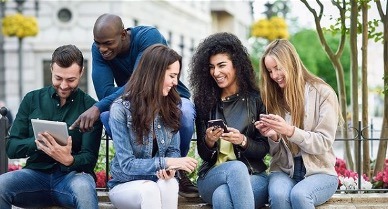
Credit: Instagram protexting
Not only have smartphones showcased young peoples’ ability to use language flexibly, but they have also made a sizeable and permanent contribution to our vocabulary, as exemplified by the Word of the Year winners. One of the ten winners of the Collins Dictionary’s Word of the Year 2020 was ‘Tiktoker’, a term for users of the social media app TikTok. Moreover, winners of the American Dialect Association’s Word of the Year included ‘tweet’ (2009), ‘app’ (2010) and ‘hashtag’ (2012), all of which are words concerned with the use of smartphones and social media applications. It is clear that smartphones are integral to our ever-expanding vocabulary, and thus to our ability to be literate in a modern society.
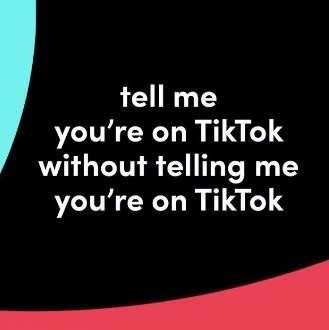
Credit: Instagram tiktok
It seems that some members of the population will always be against smartphones and continue to deny the affordances that they offer. However, what one archaic landline operator sees as laziness, another dedicated smartphone user sees as expediency. The days of continuously clicking the keys of a Nokia brick phone to select your desired letter (and playing Snake when boredom overcomes you) are finished. Instead, entire sentences can be typed with a single tap of the screen using the advanced predictive messaging setting, while the use of emojis negate the use of words altogether to craft messages. The affordances of smartphones enable users to communicate efficiently, it does not mean their levels of literacy are compromised.
The world is speeding up. It’s time we all jumped aboard.
#smartphone #literacy #emoji #wordoftheyear #TikTok
References (in order of appearance):
Barnwell, P. (27 April 2016). ‘Do Smartphones Have a Place in the Classroom?’. The Atlantic. Available at:
<https://www.theatlantic.com/education/archive/2016/04/do-smartphones-have-a-place-in-the-classroom/480231/> [Accessed 20 February 2021]
Tagg, C. (2015). Exploring Digital Communication. Oxon: Routledge., p.101.
Borbon, C. and AFP. (16 November 2020) ‘In Pictures: Collins Dictionary’s ten words of the year 2020’. Gulf News. Available at:
<https://gulfnews.com/photos/news/in-pictures-collins-dictionarys-ten-words-of-the-year-2020-1.1605533279023?slide=10> [Accessed 20 February 2021]
Almanza, A. (6 November 2018). ‘Here is Every ‘Word of the Year’ Since 2000’. Reader’s Digest. Available at:
<https://www.rd.com/list/word-of-the-year/> [Accessed 20 February 2021]
0 notes
Text
Food for Thought: How Instagram is contributing to negative body image
According to Priory Group, between 1.25 and 3.4 million people in the UK are suffering from eating disorders, with most disorders developing during adolescence. These overwhelming statistics emphasise the severity of the problem, which has only been exacerbated by the affordances of social media apps such as Instagram. The sheer number of slim, toned (and usually extensively edited) bodies posted on the platform and consumed by impressionable young people only perpetuates the ‘thin ideal’ originally glamourised by mainstream media. Merika Tiggemann’s study investigating body positivity and Instagram images revealed that the picture element of the post is more likely to impact body image than the associated text. This highlights the importance of Instagram images over their captions, and the effect of these pictures on body image. Faced with my own issues surrounding body dysmorphia, I am forced to heavily censor which Instagram accounts I follow in order to limit my exposure to potentially damaging posts.
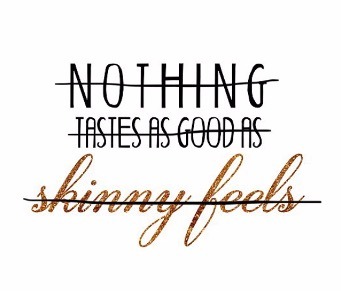
Credit: Instagram projectgoddess_
Despite the preference for images over text on Instagram, influencers use both their pictures and captions to promote themselves and their affiliated products. Long gone are the days of marketing goods during commercial breaks in daytime television programmes, replaced instead by influencers who promote their own personal brand along with the products they are paid to advertise through the affordances of Instagram. These personal brands, and the individuals behind them, wield an immense power. Caroline Tagg has indicated how online users no longer access information directly from professional providers, but through “repostings and recommendations” on their social media pages. This reflects how traditional forms of power have been decentralised through the rise of apps such as Instagram, allowing unqualified influencers to distribute information which is eagerly lapped up by their followers.
For this reason, the increasingly popular #fitspo influencers, who post food and fitness related content, are potentially damaging to vulnerable followers. These followers hang off every word of unqualified advice, using this to inform their lifestyle choices over the legitimate advice and scientific evidence provided by qualified nutritionists and doctors. This is both terrifying and extremely dangerous. The ability for influencers to mediate their content, posting highlight reels of their life or heavily filtered images, contributes to low self-esteem as ingenuous followers are unable to achieve the perfection portrayed by these curated accounts. The irony is that the influencers themselves cannot achieve this level of perfection as it is so heavily mediated, it is fake.

Credit: Instagram mollymaehague
With so many young people attempting to emulate the ideal thin bodies promoted on Instagram, it is no wonder that the NHS is overwhelmed with eating disorder patients seeking help. While influencers jet off to Dubai to post endless (highly edited) scantily clad beach photos on their account, countless isolated individuals follow their movements avidly from home, starving themselves in the pursuit of #health and the ideal body that, actually, doesn’t exist.
References (in order of appearance):
Eating Disorder Statistics UK, Priory Group. Available at:
<https://www.priorygroup.com/eating-disorders/eating-disorder-statistics> [Accessed 20 February 2021]
Tiggemann, M. (June 2020). ‘#Loveyourbody: The effect of body positive Instagram captions on women’s body image’. Body Image. (Volume 30). Available at:
<https://www.sciencedirect.com/science/article/abs/pii/S1740144519305030> [Accessed 20February 2021]
Tagg, C. (2015). Exploring Digital Communication. Oxon: Routledge., p.7.
2 notes
·
View notes